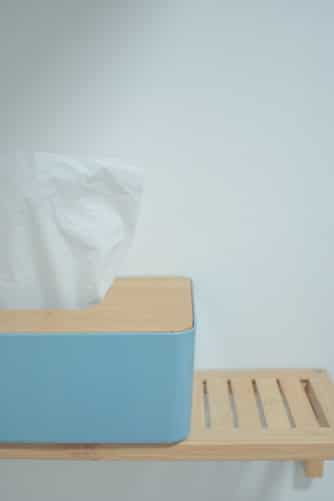While not all sinus infections require treatment, it is important to identify them early. This will ensure if you do need medical intervention, it is readily available. Below is a breakdown of how you can go about getting your sinus infection diagnosed.
What Is a Sinus Infection?

A sinus infection is inflammation of the lining of your sinus cavity. These hollow cavities inside your skull can easily become blocked and fill with fluid. When this happens, germs can grow and develop into an infection.
Causes of a sinus blockage include:
- Common cold.
- Allergies.
- Nasal polyps.
- Deviated septum.
Facial pain and pressure, a stuffed up or runny nose, loss of smell and congestion are common symptoms of a sinus infection. While less common, some experience bad breath, fatigue, a fever and even dental pain.
At-Home Check
A viral infection is the most common cause of a sinus infection. Since antibiotics are only prescribed if the source of your sinusitis is a bacterial infection, your doctor has a few telltale signs to identify the cause. If you report having recently caught a cold from spending time at during a more crowded day at Chimney Rock State Park, this is a good indication a viral infection is to blame.
An easy way to identify the cause is to wait and see if your symptoms resolve on their own. For most, their symptoms will begin to improve in a week.
If after 10 days your symptoms are not improving, or they improved only to worsen again, you may have developed a bacterial infection. Additional signs of a bacterial infection include:
- High fever.
- Severe sinus pain (only on one side).
- Discolored nasal discharge.
Changes in your vision, swelling around your eyes, a severe headache or confusion are signs that your infection is spreading, in which case you should seek medical attention immediately.
In-Office Exam
Your doctor will review your symptoms and conduct a physical exam. This exam will involve your doctor looking inside your nose and throat. If needed, they may order additional tests including a culture swab, blood tests, allergy tests or imaging.
If your symptoms have lasted for more than 12 weeks or you have had multiple sinus infections over the last year, your doctor may order an X-ray or a CT scan of your sinuses. This gives them information about any structural causes of your chronic sinus infection.
In order to get a better look inside your nasal passages, a nasal endoscopy may be performed. This involves inserting a thin tube with a light and a camera on the end into your nose. To learn more about the cause of your sinus infection or to schedule an appointment with an ear, nose and throat doctor, contact Foothills ENT and Allergy and Hearing Center today.
